Why does the gas boiler go out? Overview of typical faults and how to solve them
The prospect of being left without heat in the cool autumn and frosty winter will please few. If this happens, then in the best case, it is possible to return the room to a comfortable temperature in a few hours. After all, it takes time for the master to arrive on call.
To quickly resolve the problem, it would be nice to learn to identify and eliminate the cause of the malfunction yourself. It is necessary to understand why the gas boiler goes out, and try to get rid of at least elementary malfunctions on your own. We will tell you how to find them.
Of course, no one forces you to dismantle the equipment yourself or change the part if there are no tools or preparation for this. However, information on simple and affordable repair operations will come in handy. In addition, they will help to monitor the actions of gas workers, not all of whom are quite experienced and competent.
The content of the article:
Why can the burner go out at all?
The boiler attenuation occurs as a result of the operation of the automation of the device, which responds to the following violations in the operation of the system:
- the draft in the chimney has decreased or disappeared;
- gas pressure in the supply line has dropped;
- the flame in the burner went out.
Moreover, these processes can occur as a result of internal damage, or due to external factors.
If you consider floor models (manufacturers: Danko, Aton, ROSS, Zhytomyr), then they have a primitive internal structure. Therefore, breaking into them, if you understand, there is nothing special. Attenuation in this case occurs most often due to strong wind on the street or other external factors.

But wall-mounted gas boilers in their design already resemble an autonomous mini-boiler room, and therefore there may be more options for stopping the gas boiler:
- the coolant circulation was interrupted or did not start after repair of the circuit (flow sensor responds);
- air supply decreased / stopped (pressure switch is activated);
- voltage drops occur;
- power outage.
If the hinged heat generator goes out, it is not easy to restore its work. However, some malfunctions can still be completely resolved on their own. Learn how to do this below.
The main causes of attenuation
If before this the equipment worked properly, and now the automatic valve began to shut off the gas supply, there may be several reasons. Depending on them, the ways of their elimination will be different.
Decreased / lost traction
Rule number 1 in the case of attenuation atmospheric boiler: check traction. This can be done with a match or a lighter, which should be brought to the viewing window.
Further actions depend on the behavior of the flame:
- if it deviates towards the combustion chamber, there is a draft - everything is in order;
- if it remains vertical, there is no draft.
It is important not to forget to close the gas supply valve well. But that is not all.
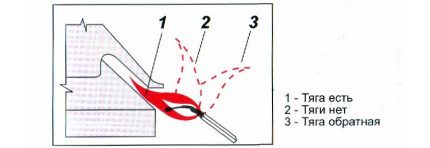
Remove the part of the pipe that is connected to the outlet pipe and check the draft now in the chimney:
- if it is, you need to clean the boiler channels;
- if not, you can limit yourself to cleaning the chimney.
What, in fact, have to clean? Where does pollution come from in the chimney? It accumulates natural products of combustion in the form of soot and deposits of soot, fallen leaves, and sometimes even the boiler goes out due to an avian bird!
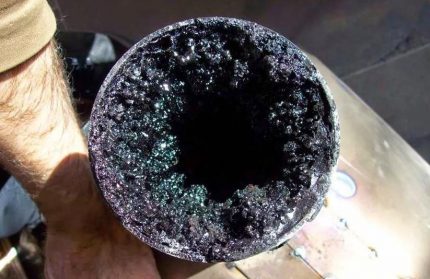
If a blockage forms at the inlet, it will not be difficult to clean it yourself. But if at the top of the pipe - you have to wait for the master with the tools (you may have to use the access from the roof).
There was a reverse draft in the chimney
Sometimes the boiler may go out due to back draft. This means that because blowing gas boiler the wind does not leave the smoke from the chimney into the street, but returns back to the furnace, thereby knocking down the flame.
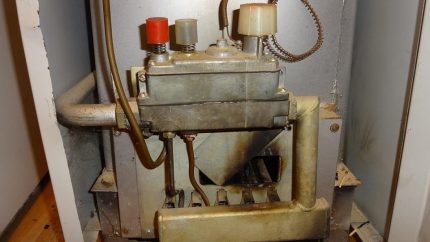
The solution to the problem may be alternative:
- Install a protective cap at the end of the chimney (people call it a deflector, popularly call it a “fungus”).
- Increase the chimney pipe itself by 1–2 m, if due to the height and location of the nearest buildings there is a violation of the circulation of air masses.
Cornice caps are currently prohibited according to SNiP II-35 and SNiP 02.04.05. However, in some cases, their installation may be the only way out - so it is still better to consult with gas workers.
Nozzle or burner filter clogged
If the igniter does not light when the boiler is turned on, this is a sure sign that the starting elements are clogged. Namely - it is necessary to clean the nozzles of the igniter nozzle, the fine mesh inlet filter or the filter of the kindling burner. You can do this yourself with the help of handy tools.
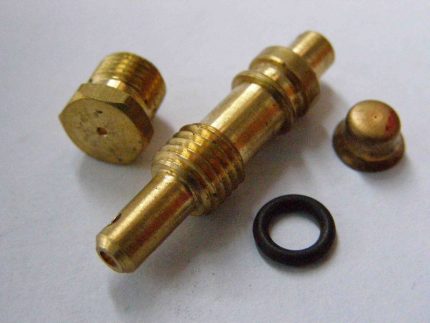
For example, filters can be easily blown (it’s enough just to blow, but if there is a handheld vacuum cleaner or pneumatic spray, it will, of course, be more convenient). You will have to tinker with the nozzles - scrape off the soot with a thin copper wire until the initial diameter of the nozzles “returns”.
Gas line pressure decreased
Turning off the burner is the very first sign of a pressure drop in the gas supply line, while the igniter flame does not go out at the time the boiler stops working.
First of all, evaluate how the gas flows through the pipeline. To do this, unscrew the hose of the nozzles and fully open the valve, and then see:
- if the smell of methane hisses strongly and stands out, everything is normal with the supply;
- if the signs are almost invisible or not, the problem is in the gas supply system.
After that, immediately close the shut-off valve, return the hose to its original position and check the joints for leaks with soapy water (if it foams at the joint, this is a 100% leak).
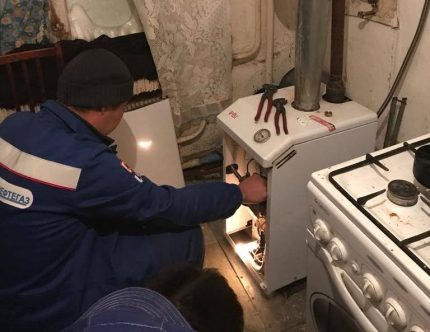
If there is no leak, deal with the meter: after repair, it can leave scale or rust in it, which will cause gas to pass poorly. "Clogged" flow meter shows incorrect data.
However, the gas flow meter itself cannot be cleaned in accordance with Resolution No. 261-FZ. This should be done only by representatives of the gas service with the appropriate license.
Not enough oxygen to burn gas
Poor ventilation can also cause boiler damping. Let's try to figure out what this means.
Inadequate air intake is most often caused by the following prerequisites:
- tightness of plastic windows;
- insulated hopeless interior doors;
- layout of the boiler room with violations;
- excessively powerful hood in the kitchen;
- forced ventilation in the bathroom and toilet.
You can check the oxygen deficiency by opening the window and turning on the gas burner. If the flame has stabilized, the situation is nowhere clearer.
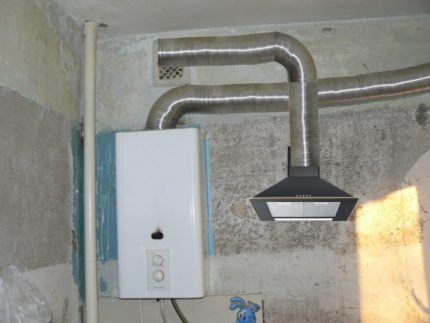
The problem is solved as follows: install the supply valves on the windows or organize a system of forced air intake from the street by installing supply ventilation valve in the wall.
Violations in the electrical circuit
Due to a loss of communication with the thermocouple, incorrect signals about the absence of a flame are sent to the electromagnetic valve. Because of this, the gas supply stops.
When the boiler goes out immediately after a short operation or after choosing a different mode, this is a signal of problems in the electrical circuit:
- rupture of contacts of a temperature regulator, thermocouple or vacuum sensor;
- the thermocouple does not enter the flame zone or does not give the required voltage;
- breakdown of the temperature controller, electromagnet coil or thermocouple.
All these problems can also be solved without calling the wizard. The main thing is to stick to the algorithm.
In order not to stray from the correct sequence of actions, do the following step by step:
- alternately check the resistance on the sensors and connecting devices - normal 0.3-0.5 Ohm;
- clean all “oxidized” places with fine sandpaper, tighten the loose contacts;
- disconnect the thermocouple from the main unit, connect the tester and, by pressing the start button, turn on the ignition burner;
- measure the voltage - normally 10-50 mV.
If all is well, put everything back in place, adjust the position of the thermocouple. If there is no voltage, remove the top cover of the main unit, warm the thermocouple with a splinter, press the safety valve, and then release.
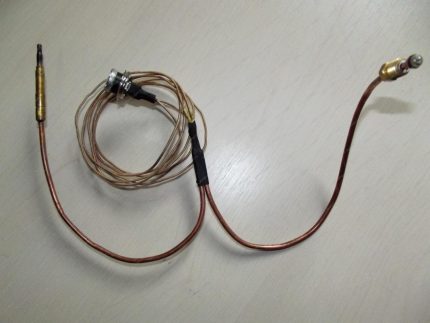
If the valve still holds, remove the block with the contacts and apply voltage (220 V power supply) to the coil bypassing the thermostat.
After these manipulations, you can start the boiler. If the problem persists, then the old thermocouple and the solenoid valve coil cannot be repaired.Need new parts.
Typical problems with turbo boilers
The problems described above also apply to turbocharged boilers. But in addition, given the equipment with additional elements of boilers with a closed combustion chamber, additional “troubles” can occur with them.
For example, during their operation, one may encounter the following difficulties:
- icing coaxial chimney outside the home;
- damage to the built-in air blower.
Their design, of course, is more complicated than that of models with an open combustion chamber. But at the same time, all the same manipulations can be carried out with them as with atmospheric boilers.
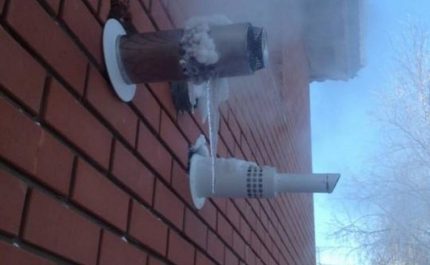
But let us dwell in more detail on breakdowns characteristic of this particular type of equipment.
Icing of a hood or chimney
If you observe that the boiler goes out most often in cold weather, then most likely the chimney target is blocked by an ice mass.
This may be due to:
- formation and accumulation of condensate;
- sticking snow.
As you can see, the reason is bad weather conditions. Therefore, the solution to the problem is to protect the chimney from external factors.
In this case, again, it is worth considering the option of installing a "fungus", i.e. deflector. But this is a preventive measure. But what should be done if the problem has already “matured”, and the weather conditions exacerbate the situation? There is a way out in this situation.
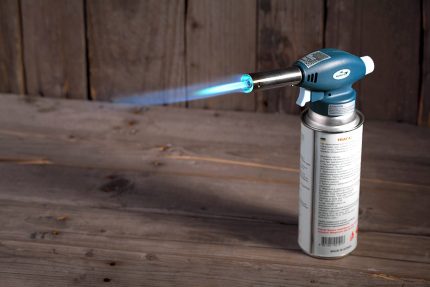
Condensation settling in pipes is typical for convection boilers with a coaxial chimney. They form plugs due to the temperature difference of the air flows drawn into the burner from the street and going out. These ice jams block the path both to and from the combustion chamber.
To remove the ice crust from a coaxial chimney, you may even need to dismantle its outer part. Dismantling will affect the daily operation of the system, but it’s better not to bring it to this. Sometimes, in order to prevent the accumulation of condensate in the gap between the pipes, a couple of holes are drilled in the external circuit.
Just knocking ice is not an option. Moreover, the chimney can be damaged. Better buy a portable gas burner with spray can and "melt" the chimney with it. After the cork melts, the boiler will work again. But so that such incidents do not arise in the future, the pipes should be insulated.
The second prerequisite arises in cases of installation of cornice hoods: they protect the chimney from precipitation, but in winter they cause more trouble than good, making it difficult for the outflow of flue gases.
Fan or turbine malfunction
When it suddenly goes out during operation or the wick of a gas boiler with a built-in supercharger does not light up initially, listen to what sounds it makes.
In normal operation, the turbocharging system should be a steady buzz, so with the appearance of extraneous noise it is worthwhile to beware.
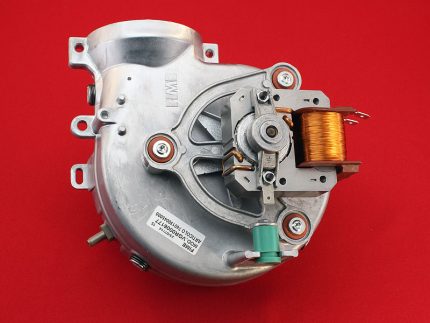
If there is no operation, the breakdown is obvious: that is, the automation does not allow the protective valve to be opened, so the wick does not light up.
Here, in this case, we strongly recommend not to engage in amateur performances, but to immediately call gas workers. Turbocharging can not be repaired in most cases - most likely it will have to be replaced, and such work involves a risk of carbon monoxide spreading throughout the room.
Therefore, it is better if the gasman from the company with which he is concluded controls the process. service contract equipment and gas supply.
Typical problems of double-circuit boilers
Double-circuit modifications of gas boilers designed to prepare the coolant and hot water can also attenuate for all the reasons described above. But if there are no signs of the above damage, perhaps the problem is caused by the specific features of the unit.
These include those that arise due to the operation of the protection system against overheating of water, namely:
- mixing hot and cold running water;
- thinning the walls of the gearbox diaphragm.
In the instructions for boilers with an additional heat exchanger for domestic hot water, it is usually warned that two valves cannot be opened at the same time. It is better to initially select in the settings the most suitable temperature for heating domestic hot water.
The fact is that when cold water is turned on, the consumption of hot water decreases, and heat is generated all in the same mode, overheating the heat exchanger. Due to overheating, automation is activated, which shuts off the gas supply and blocks the operation of the boiler.
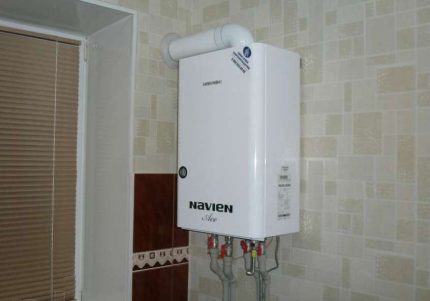
If the operation is carried out according to the instructions, and the dual-circuit unit is still turned off - you need to change the gasket of the water unit. Most likely she wore out.
Conclusions and useful video on the topic
The following video will clearly introduce the causes of the attenuation of the burner of a gas boiler:
Do not forget that the above problems may not arise if you monitor the condition of the gas equipment and conduct its preventive inspection.
At the same time, if you can’t determine the breakdown on your own or if there is already a pronounced smell of carbon monoxide in the room, call the master immediately.
Have you had to deal with the extinction of the flame in the burner of a gas boiler? Share your own experiences and troubleshooting options. Please leave comments in the block below, post photos and ask questions about the topic of the article.

 Why a gas boiler often turns on and off: the causes of malfunctions and their solutions
Why a gas boiler often turns on and off: the causes of malfunctions and their solutions 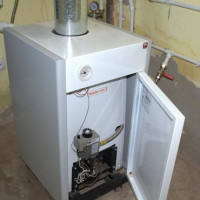 Gas boiler repair: an overview of common failures and how to fix them
Gas boiler repair: an overview of common failures and how to fix them 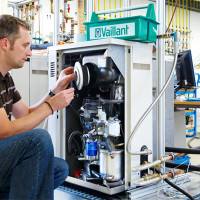 Why the gas boiler is noisy: why the unit is buzzing, clicking, whistling, clapping + how to fight
Why the gas boiler is noisy: why the unit is buzzing, clicking, whistling, clapping + how to fight 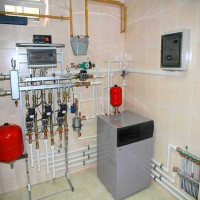 What to do if the gas boiler blows in the wind: causes of the boiler attenuation and methods for resolving the problem
What to do if the gas boiler blows in the wind: causes of the boiler attenuation and methods for resolving the problem 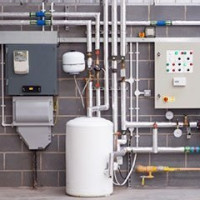 How to choose the best gas boiler: an overview of the criteria for choosing the best unit
How to choose the best gas boiler: an overview of the criteria for choosing the best unit  Why does the gas column go out: typical causes and a guide to resolve them
Why does the gas column go out: typical causes and a guide to resolve them  How much does it cost to connect gas to a private house: the price of organizing gas supply
How much does it cost to connect gas to a private house: the price of organizing gas supply  The best washing machines with dryer: model rating and customer tips
The best washing machines with dryer: model rating and customer tips  What is the color temperature of light and the nuances of choosing the temperature of the lamps to suit your needs
What is the color temperature of light and the nuances of choosing the temperature of the lamps to suit your needs  Replacement of a geyser in an apartment: replacement paperwork + basic norms and requirements
Replacement of a geyser in an apartment: replacement paperwork + basic norms and requirements